MONET SIGNATURE AUTHENTICATION


The Beach at Sainte-Adresse, 1867
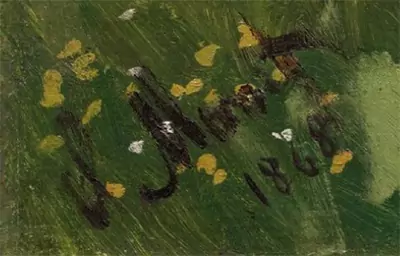
On the Bank of the Seine, Bennecourt, 1868

The Artist's House at Argenteuil, 1873


Arrival of the Normandy Train, 1877
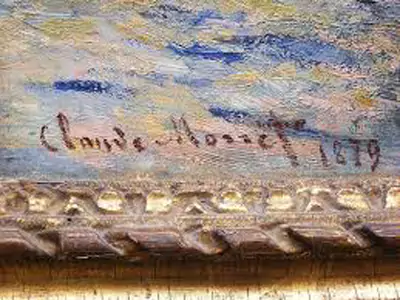
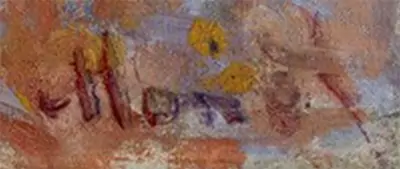

Apples and Grapes, 1880.

Boats Lying at Low Tide at Fécamp, 1881
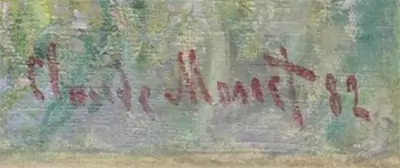
Cliff Walk at Pourville, 1882

Monet, La Cabane des douaniers. Effet d’après-midi (1882) oil on canvas, Musée d’Orsay, Paris.
The first step in authenticating Claude Monet (French, 1840-1926) signatures is finding indisputably authentic signature examples. We have extensive knowledge of Monet’s authentic oeuvre.

Monet, Val-Saint-Nicolas, Near Dieppe (Morning) oil on canvas, Phillips Collection.
The flow of letters, how each letter relates to the one next to it and to the overall signature, is one of the qualities we use to judge the authenticity of a signature.
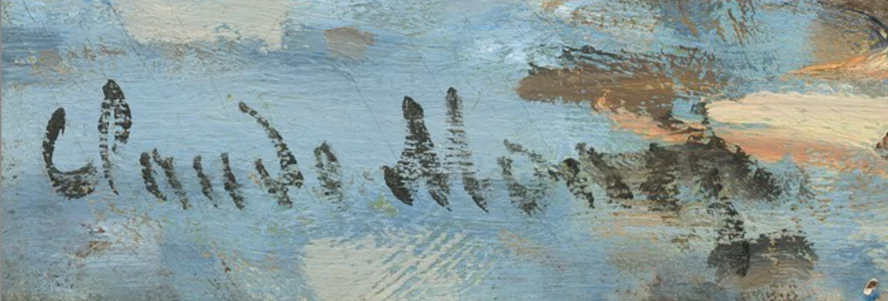
Monet, Ships Riding on the Seine at Rouen (1872/3) oil on canvas, National Gallery of Art, Washington, DC.
Many authentic Monets are signed on the lower right of the canvas. This one is signed on the lower left. Whether he signed on the left or right, Monet often signed his name flush with the horizontal edge of the canvas.

Monet, Champ de coquelicots pre de Vetheuil (ca. 1879) oil on canvas, E.G. Buhrle Collection.
Sometimes Monet’s signature is nearly illegible. Monet Experts have the necessary knowledge to be able to deal with such difficult signatures and to help you understand the enigmatic signature on your work of art attributed to Claude Monet.

Monet, Study of Five Boys (ca. 1864) pencil on paper, Museum Boijmans van Beuningen.
At other times, in sketches, Monet signed only the first two letters of his first name. These sketches were intended only for Monet’s use in planning oil paintings or were given as gifts to friends or patrons.

Monet, Caricature of a Man with a Snuff Box (1858) charcoal and white chalk on blue wove paper, Clark Art Institute.
Monet’s real first name was Oscar; Claude was his middle name. In some early caricatures, he signed his name as “O. Monet.” As a teenager in Normandy, Monet got his start as a professional artist doing portraits and caricatures. He sold portraits and caricatures to get the money to go to Paris and formally study art.

Monet, Alley of Trees, Gournay (1857) pencil on paper, World Children’s Art Museum, Okazaki, Japan.
Often in informal pieces—such as this sketch—Monet did not sign his name. Informal pieces were not intended for sale or public viewing. In such circumstances, Monet only wrote the date and the place where the drawing was done.

Monet, Waterloo Bridge, effect de brume (ca. 1899-1904) oil on canvas, private collection.
Monet sometimes favored colorful signatures. The green signature in Waterloo Bridge complements the green accents in the painting. The signature here is dated 1904. Art historians believe Monet worked on the painting for several years before its completion in 1904.


Monet, The Beach at Honfleur (ca. 1864-66) oil on canvas, Los Angeles County Museum of Art.
Sometimes, Monet would write his signature in black, an accent color in this painting. This signature is also unusual because it does not include the year or full date, typically written by Monet in his signatures.

Monet, The Windmill on the Onbekende Gracht, Amsterdam (1874) oil on canvas, Museum of Fine Arts, Houston.
We examine how much pressure was used to apply the letters to the canvas as well as the spacing of letters in order to determine whether the signature is Monet’s. Although handwriting changes over time, there are often some consistencies in the amount of pressure applied to each letter.
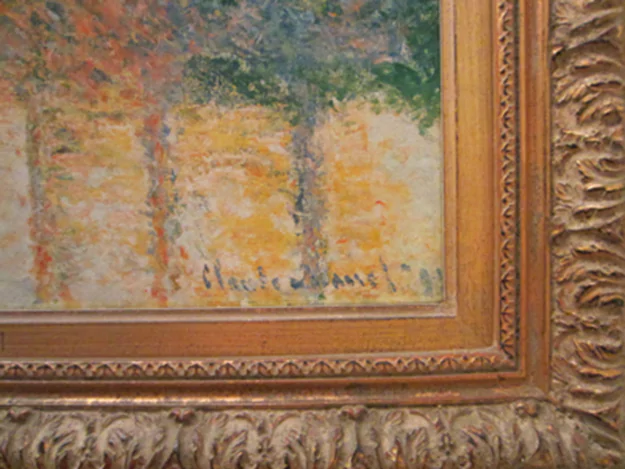
Signature analysis, naturally, is not the only evidence of authenticity used by Monet Experts.
Please contact us to determine whether you have an authentic Claude Monet signature: +1 (646) 566-9240.
